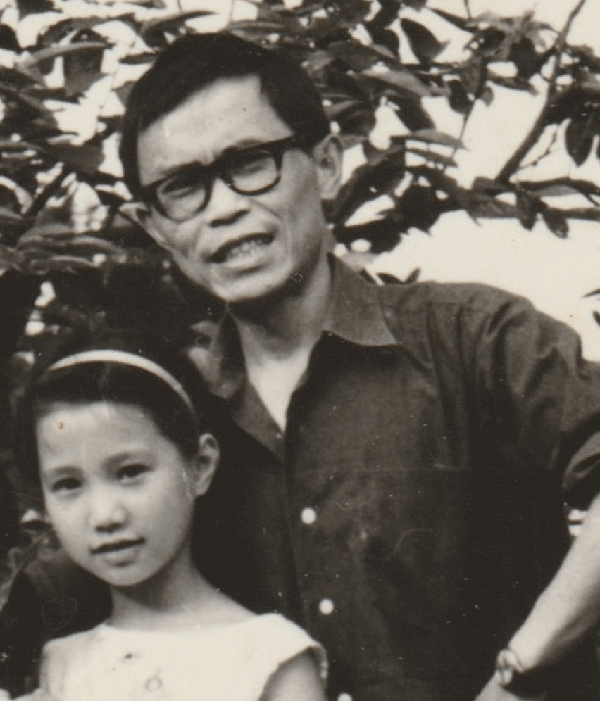
In 1981, with my daughter in Chengdu.
Character Introduction
Xiang Jichun (June 8, 1942 - February 6, 2025), a Han Chinese from Liefan Town, Wusheng County, Sichuan Province, was a Chinese science popularization and science fiction artist and a pioneer of Chinese science fiction art. He served as the art editor of the magazine "Science Fiction World" and participated in organizing the World Science Fiction Convention (1991). He was one of the earliest Chinese artists to engage in science fiction-themed painting.
Biography
Xiang Jichun was born in Liefan Town, Wusheng County, Sichuan Province, on June 8, 1942 (lunar calendar). He graduated from the Drawing Room of Nanchong Medical Technician College, Sichuan Province in 1960. After graduation, he stayed at the school as a drawing instructor for anatomical diagrams and was also responsible for the school's propaganda posters. During the Cultural Revolution, he was sent to a farm in Longchang County, Sichuan Province for labor training. In his spare time, he self-studied painting and began publishing a large number of New Year pictures and children's picture books from 1978. He created a series of children's picture books for Sichuan Children's Art Publishing House, such as "The Monkeys on Mount Emei" and "The Wolf and the Lamb". He also created six flower-and-bird albums with huge circulation and was widely used in various mainstream newspapers. He also created special illustrations for People's Daily, Guangming Daily, "Stars", "Drama and Film", etc.
In 1979, his work "Not Only the Tragedy of the Monkey" won the first prize in the "National Science Popularization Art Exhibition". In 1980, he was transferred to the "Science and Literature" magazine under the Sichuan Association for Science and Technology as an art editor. In the early 1980s, when science was valued and the combination of art and science was pursued, the direction of "Science and Literature" was unclear. Most of the text editors had a background in literary writing, and Xiang Jichun was the only art editor without a background in science or technology. There were not many contributors, and the editors themselves had to create. It can be seen that the editors published many articles under different pen names. The magazine's cover and internal illustrations faced the same problem. Many active painters in Chengdu were invited to create for "Science and Literature", but there were almost no painters who could create with scientific themes. Some contributions were more inclined to praise scientific workers, such as the woodcut artist from Chaozhou. Therefore, in the face of the blank of Chinese science fiction art, Xiang Jichun, as an art editor, had to create a large number of works himself and naturally became one of the earliest creators of Chinese science fiction art.
In 1986, the magazine's operation entered a difficult stage. To solve the financial crisis such as wages, Xiang Jichun and his colleagues in the editorial department came up with other publishing projects, such as printing children's literacy cards and "365 Goodnight Stories", to get through the difficult times together.
In 1990, Xiang Jichun and the chief editor Yang Xiao went to The Hague, the Netherlands to participate in the World Science Fiction Convention and won the right to host the 1991 convention in Chengdu, China. This trip enabled him to have a comprehensive understanding of the concepts of science fiction art and science fiction art outside China for the first time and began to try to combine Chinese themes, regional elements, and science fiction for creation. His drawing tools were mostly duck quill pens and brushes, which were especially suitable for the black and white ink and zinc plate etching printing technology used in the magazine's internal pages. Every month, he would take the manuscripts from the editorial department to the Sichuan Military Region Printing Factory to personally adjust the colors and confirm the printing and plate-making processes in the printing workshop. After 1992, he began to use new tools such as spray guns, and the colors of his works became more saturated and the color gradients more subtle.
From 1981 to 1992, he also created a large number of illustrations for magazines such as "Stars" poetry journal and "Red Scarf".
After 1995, he retired from "Science Fiction World" and began to use computers for painting. He participated in the construction of Lan Gu Computer School, vigorously promoted computer painting, and taught various painting software.
Since August 2022, he has started using AI painting software such as Midjourney. * Science Fiction World Magazine (1980-1995)
Published Works:
* The Fox and the Goat, Sichuan People's Fine Arts Publishing House
* Flower Titles, Sichuan People's Publishing House, 1978
* Flower Titles 2, Sichuan People's Publishing House, 1979
* Flower Titles Reference, Sichuan People's Publishing House, 1979
* Black and White Decorative Drawings of Yunnan Scenery, Yunnan People's Publishing House, November 1990, ISBN 7-222-00608-X/J·51.
* Window Display Patterns, 1982, Shanghai People's Fine Arts Publishing House
* What Is This?, edited by Ming Shu, illustrated by Xiang Jichun et al., Sichuan Juvenile and Children's Publishing House, March 1985.
* Flower Titles 2, 1982, Liaoning People's Publishing House
* Flower Titles Pattern Collection, by Ge Wenheng and Xiang Jichun, Shanghai People's Fine Arts Publishing House, 1990
* The Fox and the Goat, Sichuan People's Fine Arts Publishing House
* Cooperative Medical Care Is Good, poster, 1977,Collected by The new China, New year Pictures, Published by sendoints.
Biography
Xiang Jichun was born in Liefan Town, Wusheng County, Sichuan Province, on June 8, 1942 (lunar calendar). He graduated from the Drawing Room of Nanchong Medical Technician College, Sichuan Province in 1960. After graduation, he stayed at the school as a drawing instructor for anatomical diagrams and was also responsible for the school's propaganda posters. During the Cultural Revolution, he was sent to a farm in Longchang County, Sichuan Province for labor training. In his spare time, he self-studied painting and began publishing a large number of New Year pictures and children's picture books from 1978. He created a series of children's picture books for Sichuan Children's Art Publishing House, such as "The Monkeys on Mount Emei" and "The Wolf and the Lamb". He also created six flower-and-bird albums with huge circulation and was widely used in various mainstream newspapers. He also created special illustrations for People's Daily, Guangming Daily, "Stars", "Drama and Film", etc.
In 1979, his work "Not Only the Tragedy of the Monkey" won the first prize in the "National Science Popularization Art Exhibition". In 1980, he was transferred to the "Science and Literature" magazine under the Sichuan Association for Science and Technology as an art editor. In the early 1980s, when science was valued and the combination of art and science was pursued, the direction of "Science and Literature" was unclear. Most of the text editors had a background in literary writing, and Xiang Jichun was the only art editor without a background in science or technology. There were not many contributors, and the editors themselves had to create. It can be seen that the editors published many articles under different pen names. The magazine's cover and internal illustrations faced the same problem. Many active painters in Chengdu were invited to create for "Science and Literature", but there were almost no painters who could create with scientific themes. Some contributions were more inclined to praise scientific workers, such as the woodcut artist from Chaozhou. Therefore, in the face of the blank of Chinese science fiction art, Xiang Jichun, as an art editor, had to create a large number of works himself and naturally became one of the earliest creators of Chinese science fiction art.
In 1986, the magazine's operation entered a difficult stage. To solve the financial crisis such as wages, Xiang Jichun and his colleagues in the editorial department came up with other publishing projects, such as printing children's literacy cards and "365 Goodnight Stories", to get through the difficult times together.
In 1990, Xiang Jichun and the chief editor Yang Xiao went to The Hague, the Netherlands to participate in the World Science Fiction Convention and won the right to host the 1991 convention in Chengdu, China. This trip enabled him to have a comprehensive understanding of the concepts of science fiction art and science fiction art outside China for the first time and began to try to combine Chinese themes, regional elements, and science fiction for creation. His drawing tools were mostly duck quill pens and brushes, which were especially suitable for the black and white ink and zinc plate etching printing technology used in the magazine's internal pages. Every month, he would take the manuscripts from the editorial department to the Sichuan Military Region Printing Factory to personally adjust the colors and confirm the printing and plate-making processes in the printing workshop. After 1992, he began to use new tools such as spray guns, and the colors of his works became more saturated and the color gradients more subtle.
From 1981 to 1992, he also created a large number of illustrations for magazines such as "Stars" poetry journal and "Red Scarf".
After 1995, he retired from "Science Fiction World" and began to use computers for painting. He participated in the construction of Lan Gu Computer School, vigorously promoted computer painting, and taught various painting software.
Since August 2022, he has started using AI painting software such as Midjourney. * Science Fiction World Magazine (1980-1995)
Published Works:
* The Fox and the Goat, Sichuan People's Fine Arts Publishing House
* Flower Titles, Sichuan People's Publishing House, 1978
* Flower Titles 2, Sichuan People's Publishing House, 1979
* Flower Titles Reference, Sichuan People's Publishing House, 1979
* Black and White Decorative Drawings of Yunnan Scenery, Yunnan People's Publishing House, November 1990, ISBN 7-222-00608-X/J·51.
* Window Display Patterns, 1982, Shanghai People's Fine Arts Publishing House
* What Is This?, edited by Ming Shu, illustrated by Xiang Jichun et al., Sichuan Juvenile and Children's Publishing House, March 1985.
* Flower Titles 2, 1982, Liaoning People's Publishing House
* Flower Titles Pattern Collection, by Ge Wenheng and Xiang Jichun, Shanghai People's Fine Arts Publishing House, 1990
* The Fox and the Goat, Sichuan People's Fine Arts Publishing House
* Cooperative Medical Care Is Good, poster, 1977,Collected by The new China, New year Pictures, Published by sendoints.
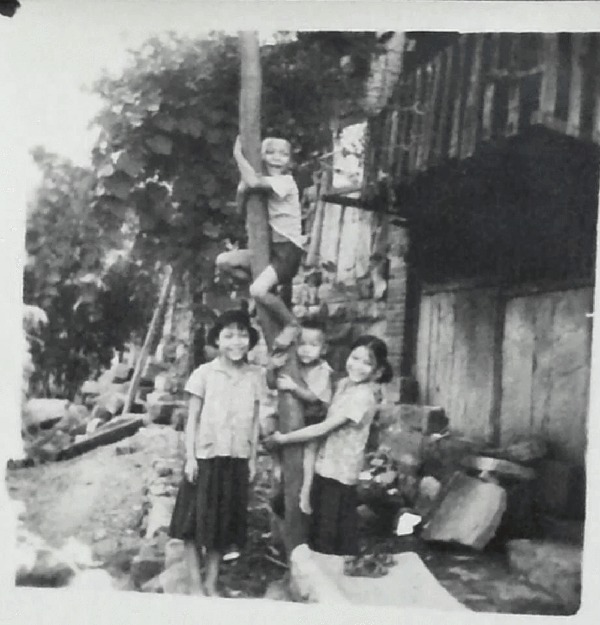
Liemian New Street,The child in the picture is one of the four children of the eldest brother.
1959
Limei Middle School, Wusheng County, Class of 1959.
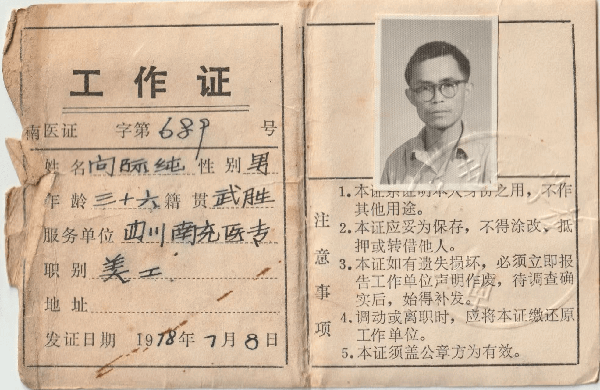
The work ID card of Nanchong Medical College. The content was handwritten by him, just like the style of the steel plate characters he later created for Founder Type.
1962
He worked in the drawing room of Nanchong Medical College for medical students, serving as an artist and drawing explanatory diagrams for medical teaching.
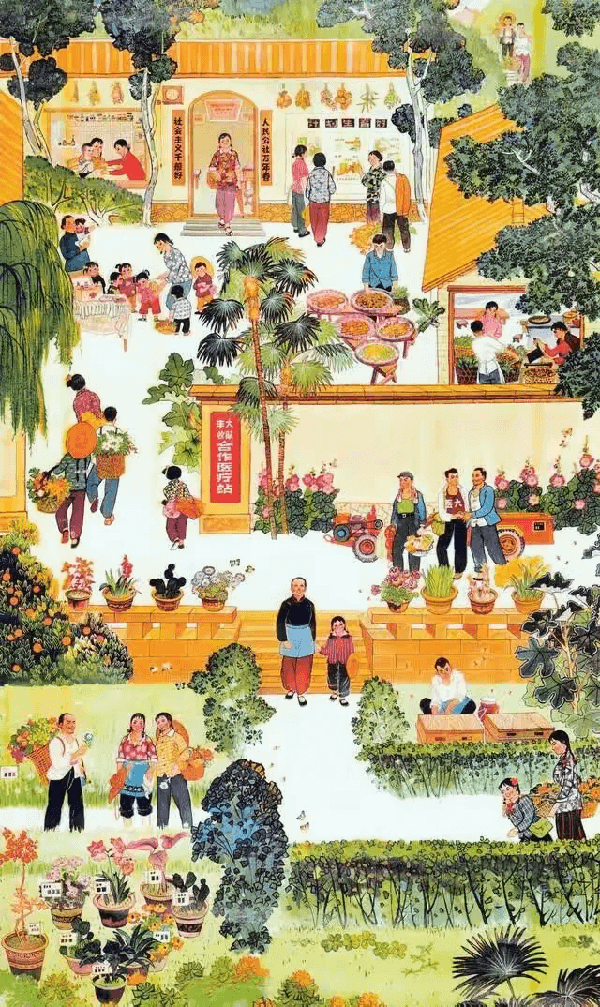
Publish the promotional poster "Cooperative Medical Care is Good"
1977
This painting conveys an understanding of the work content of rural medical institutions in China, covering issues such as medicinal materials and personnel.
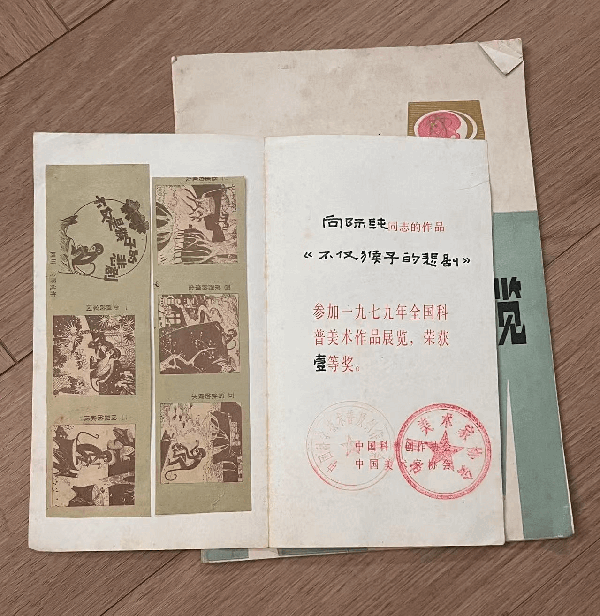
First Prize Certificate of the National Popular Science Art Works Exhibition
1979
National Science Popularization Fine Arts Exhibition First Prize Certificate: The certificate features a reduced version of the work: a multi-panel story of six pictures, along with the details of the award and the awarding institution. Due to this national first prize honor and the ecological and environmental protection theme of the creation, Ji Chun was recognized as a talent by the Sichuan Association for Science and Technology and transferred from Nanchong to Chengdu, the capital of Sichuan Province, to join the editorial department of "Science and Literature".
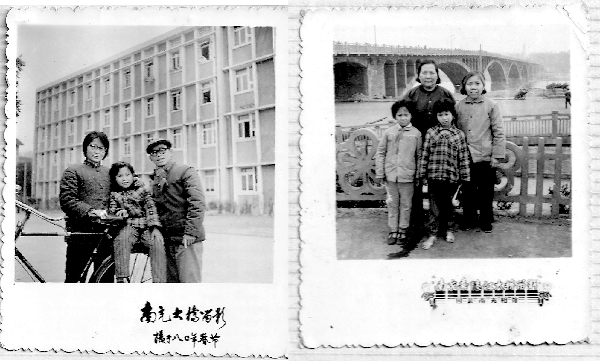
Left picture: Daughter and parents take a group photo during the Spring Festival. Right picture: Daughter and Xiang Jichun's mother-in-law and sister take a group photo.
1980
In 1980, Xiang Jichun's wife went to China Medical University in Shenyang to pursue a postgraduate degree, while he went to Chengdu. Their children stayed in Nanchong and were taken care of by relatives. This is a photo of their family reunion during the Spring Festival.
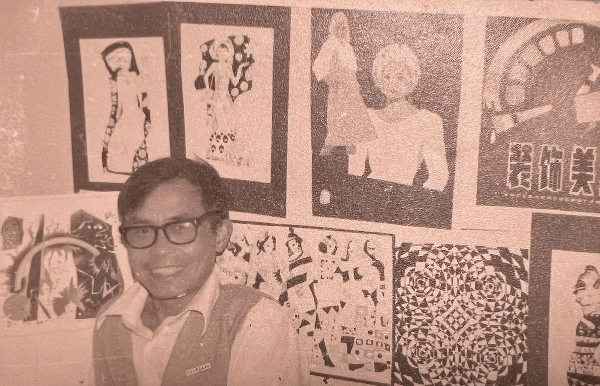
I rented a basement near the Central Academy of Fine Arts in Beijing.
1986
I attended a training class at the Book Design Department of Beijing Central Institute of Art and Design. There, I met art editors from other publishing houses across the country, especially Mr. Zhang Minghuo from Jiangxi Publishing House. During his classes here, I was influenced by courses such as decorative paintings and black-and-white paintings, which led to significant progress in my self-taught black-and-white painting creation.
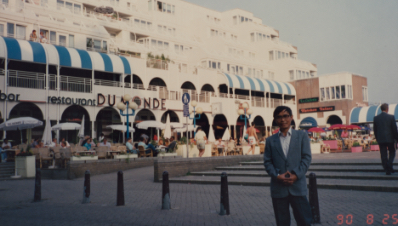
Via Moscow, I'm going to The Hague in the Netherlands to attend the International Science Fiction Convention.
1990
In 1990, together with Yang Xiao, the editor-in-chief of "Science Fiction Literature", they traveled to The Hague, the Netherlands, and won the hosting rights for the 1991 World Science Fiction Convention. They passed through the Soviet Union and brought back some Soviet perfumes and decorations back home.
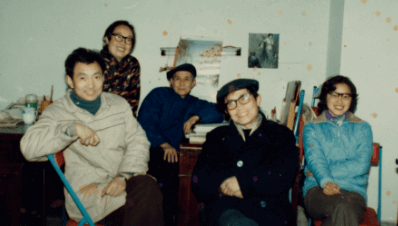
In 1991, I participated in the organization and design work of the World Science Fiction Convention. Xiang Jichun, Li Li (third and fourth from the left in the second row), and other main creative personnel of the editorial department.
1991
In 1991, the Science Fiction and Fantasy Literature Magazine held a science fiction conference in Chengdu.
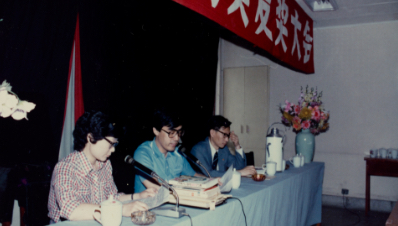
Japanese science fiction writer Yutaka Iwao delivered a speech at the science fiction conference held in Chengdu.
2007
Become a member of the Science and Art Committee of the China Association for Popularization of Science and Technology
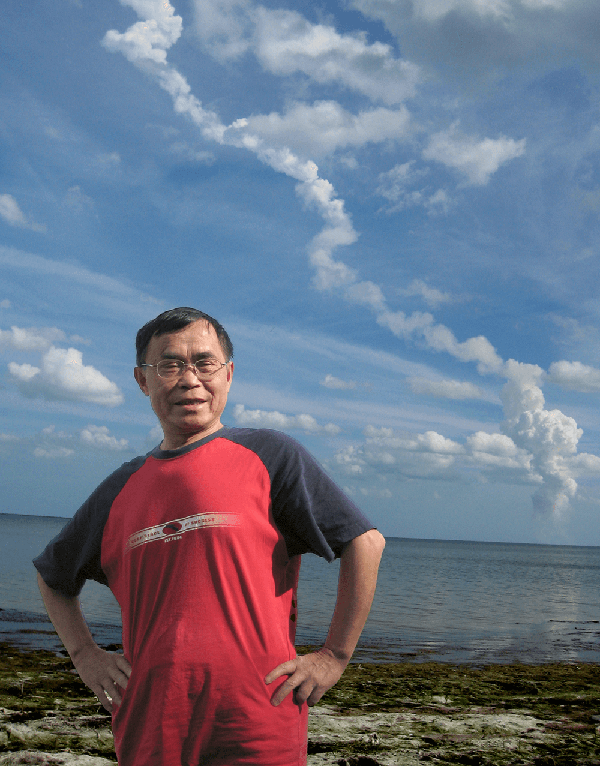
In 2017, watched the launch of a space shuttle in Florida, USA.
2008
In 2008, I went on vacation to New York and Florida in the United States.
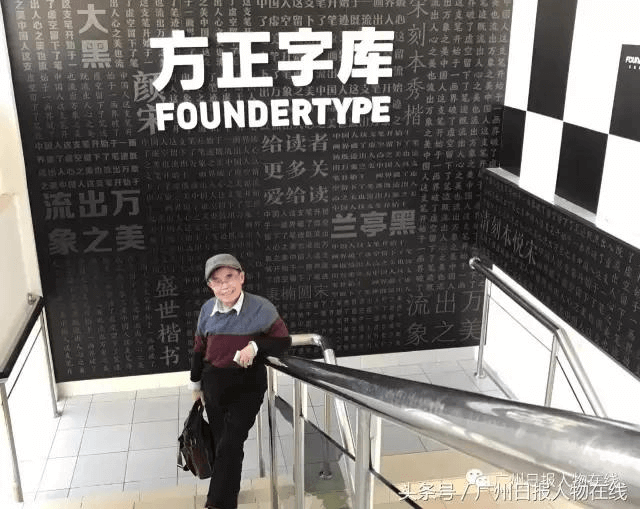
In 2017, a contract was signed in Fangzheng Font Library in Beijing, and a new typeface was released.
2017
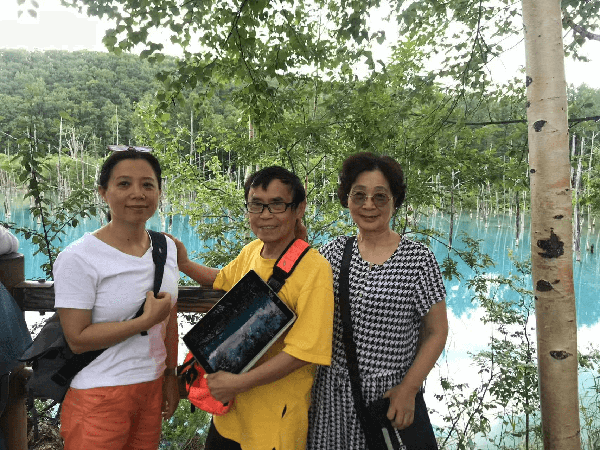
Traveled with family in 2019, in Hokkaido, Japan
2019
In August 2019, I traveled with my family in Hokkaido, Japan.
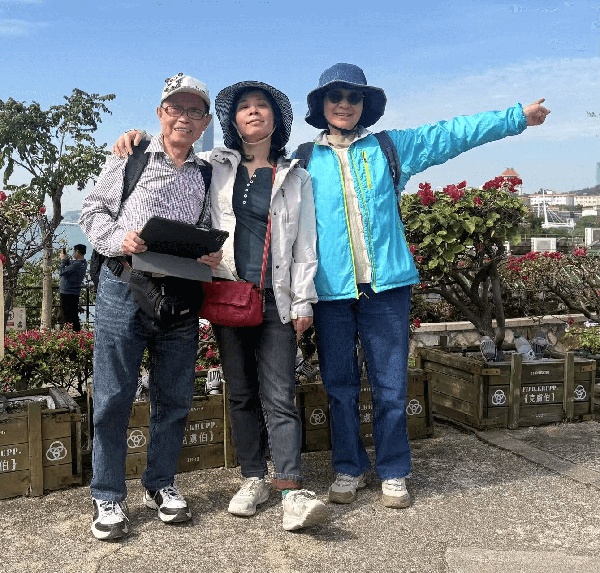
In 2024, travel with family in Xiamen, China.
2024
December 1st, 2024
Xiamen was very warm. He often went to the seaside under the setting sun in the afternoon and still hoped that some strangers would take a look at his paintings.
Xiamen was very warm. He often went to the seaside under the setting sun in the afternoon and still hoped that some strangers would take a look at his paintings.
